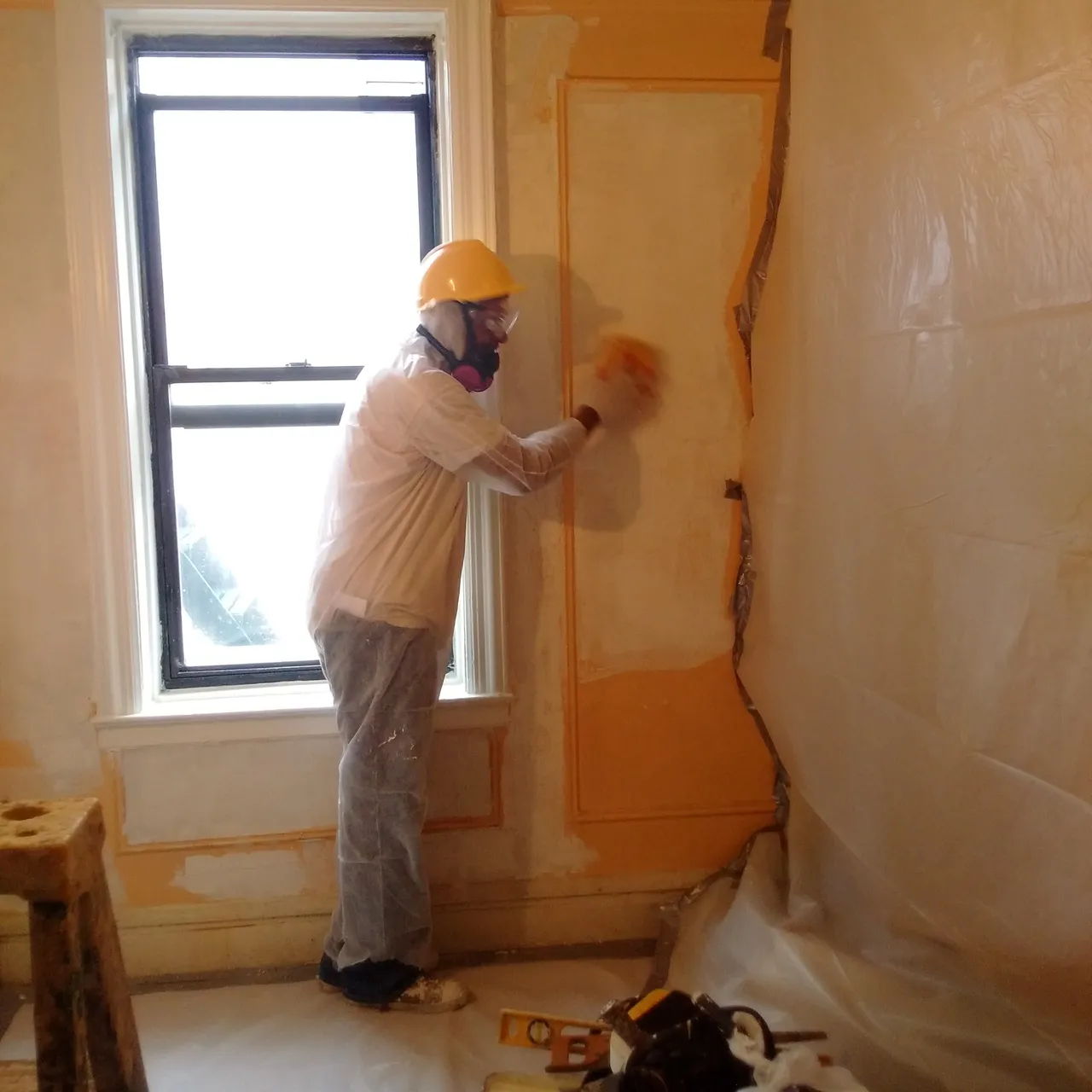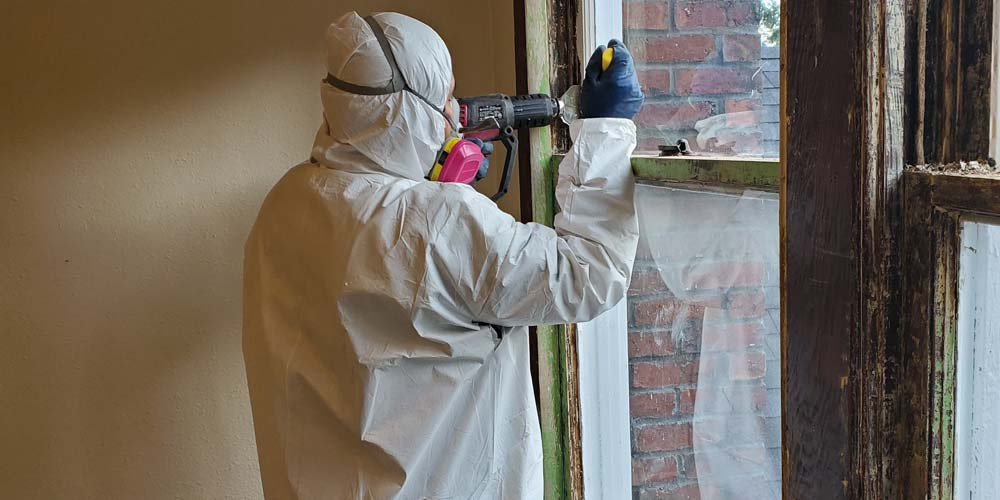Trusted Lead Paint Removal Company-- NYC's Premier Lead Reduction Service
Trusted Lead Paint Removal Company-- NYC's Premier Lead Reduction Service
Blog Article
Comprehensive Guide on Effective Lead Infraction Removal Strategies
In the realm of ecological security, addressing lead infractions requires a meticulous and organized technique. This detailed guide starts by highlighting the critical initial steps of identifying lead dangers with innovative analysis and screening techniques. The guide clarifies on the importance of sticking to rigid safety protocols throughout the elimination process, consisting of the use of correct PPE and separating impacted locations.
Identifying Lead Hazards
Identifying lead hazards is a crucial first action in mitigating the dangers linked with lead exposure. Lead, a hazardous steel, can be present in various ecological tools, consisting of paint, dirt, water, and dust.
The preliminary phase in determining lead risks includes comprehending typical lead resources within the developed atmosphere. Structures built before 1978 are particularly vulnerable due to the prevalent use of lead-based paint during that period. Additionally, dirt contamination can occur from deteriorating exterior paint, commercial exhausts, or historic use leaded gasoline.
Another significant source is lead piping and pipes components, which can seep introduce drinking water. Consumer items such as playthings, porcelains, and imported products might additionally have unsafe lead degrees. Significantly, occupational environments and leisure activities entailing lead can track pollutants into homes.
Assessment and Screening
When attending to lead hazards, efficient assessment and screening are paramount. Preliminary analysis usually entails an aesthetic examination to determine prospective lead sources, such as degrading paint or contaminated dust.

Dirt clean tasting is an additional essential technique, specifically in household setups. By gathering samples from floors, windowsills, and other surfaces, this method gives insights right into possible exposure risks. Moreover, dirt screening around structure perimeters is necessary to find lead contamination that could present hazards, specifically to youngsters.
Safe Removal Procedures
Upon completing comprehensive evaluation and testing, applying risk-free elimination treatments is the following essential stage in resolving lead dangers. This procedure ensures that lead-contaminated materials are effectively and securely gotten rid of, decreasing danger to both workers and residents. The very first step involves separating the damaged area using plastic bed linen and correct sealing techniques to prevent the spread of lead dirt.
Employees should don ideal individual protective equipment (PPE), consisting of respirators, gloves, and non reusable coveralls, to alleviate exposure. Employing specialized devices and wet approaches, such as damp sanding or making use of HEPA-filtered vacuums, reduces the dispersion of lead fragments. It is critical to prevent dry fining sand or abrasive blasting, as these methods can create damaging lead dust.
Waste disposal is an additional important part; all polluted products need to be securely gotten and labeled according to EPA and regional guidelines. Additionally, thorough cleaning of the workspace with HEPA vacuum cleaners and wet cleaning ensures the Homepage removal of recurring lead fragments.
Post-Removal Confirmation

Confirmation of effective lead removal, understood as post-removal verification, is important to guarantee the security and habitability of the remediated location. This examination makes sure that all recognized sources of lead have been addressed and that no visible signs of contamination continue to be.
Complying with the aesthetic inspection, Read More Here environmental sampling is conducted. This involves collecting dirt, soil, and in some cases water samples from the remediated area. Recognized research laboratories analyze these examples to determine lead degrees, ensuring they fall listed below the safety and security thresholds developed by governing bodies such as the Environmental Defense Agency (EPA)
Furthermore, air quality screening may be done to find air-borne lead particles, particularly in instances where extensive lead-based paint elimination or remodelling has happened. The outcomes of these examinations give quantitative data confirming that the lead degrees are within permitted restrictions.
Eventually, post-removal verification acts as an important checkpoint, confirming the effectiveness of the lead abatement efforts and safeguarding the health of passengers and visitors.
Safety Nets and Maintenance

A vital precautionary step includes the use of lead-safe accredited specialists for any type of renovation, repair work, or painting tasks. These professionals are trained in methods that decrease lead dust and particles. Furthermore, maintaining colored surfaces to avoid damaging or peeling off is vital, as deteriorating paint can release lead bits into the learn this here now setting.
Educational initiatives targeting building proprietors and lessees concerning the risks of lead and the value of reporting any possible threats can even more enhance preventative efforts. Routine cleaning making use of HEPA vacuum cleaners and wet wiping techniques can significantly lower lead dust accumulation.
Conclusion
In recap, effective lead offense elimination requires a thorough method including detailed evaluation, specific screening, and rigorous elimination procedures. Guaranteeing security via correct isolation and individual protective devices continues to be vital. Post-removal verification by means of environmental tasting and air quality screening confirms conformity with established safety standards. Furthermore, continuous examinations and upkeep are important to reduce future lead dangers, consequently safeguarding public health and making certain sustained compliance with regulatory demands.
Report this page